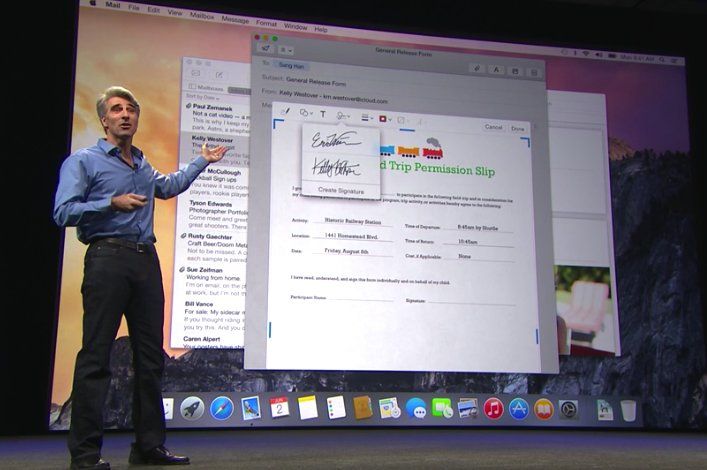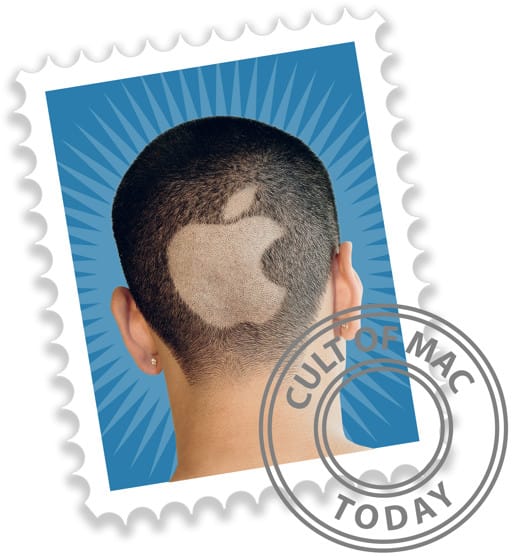 June 2, 2014: Apple shows off Mac OS X 10.10 Yosemite for the first time at its Worldwide Developers Conference in San Francisco. Following the Jony Ive-redesigned iOS 7, Yosemite boasts an aesthetic change that brings Apple’s desktop computers closer than ever to the look of the company’s mobile software.
June 2, 2014: Apple shows off Mac OS X 10.10 Yosemite for the first time at its Worldwide Developers Conference in San Francisco. Following the Jony Ive-redesigned iOS 7, Yosemite boasts an aesthetic change that brings Apple’s desktop computers closer than ever to the look of the company’s mobile software.
Named after Yosemite National Park, the update follows the previous year’s Mavericks as the second Mac operating system named after a California landmark.
Mac OS X Yosemite looks more like iOS
Despite what Microsoft did with devices like the Surface tablet, Apple staunchly opposes merging its mobile and desktop operating systems in any meaningful way. However, Yosemite made a few concessions in this area.
Along with the visual overhaul — which either appealed to customers or put them off, depending on their thoughts about the non-skeumorphic look of iOS 7 — Yosemite meant that certain iOS notifications would show up on the Mac. These included Messages and even phone calls, which Apple software chief Craig Federighi demonstrated by phoning Dr. Dre from the WWDC stage.
In this vein, Mac OS X Yosemite also introduced the ability to switch between Mac and iOS with new Continuity and Handoff features. These allowed a user to start typing a message on their iOS device, then switch to their Mac to pick up where they left off (or vice versa). Users also could easily AirDrop files from iOS to Mac. Plus, they could quickly turn an iPhone into an internet hot spot for a Mac.
You can watch Apple’s unveiling of the new Mac operating system in this video:
OS X Yosemite brings iCloud Drive and other changes
Another big feature of Mac OS X Yosemite was Apple’s attempts to fix its cloud problems by turning iCloud into a Dropbox-like file system called iCloud Drive. Yosemite also made Spotlight a more prominent part of the Mac operating system. Plus, it updated the look and feel of standard apps such as Safari and Mail.
“Yosemite is the future of OS X with its incredible new design and amazing new apps, all engineered to work beautifully with iOS,” said Craig Federighi, Apple’s senior vice president of software engineering, in a press release announcing the new Mac operating system. “We engineer our platforms, services and devices together, so we are able to create a seamless experience for our users across all our products that is unparalleled in the industry. It’s something only Apple can deliver.”
The operating system itself didn’t ship to most customers until October 16, 2014. However, developers could download a beta version immediately after the WWDC keynote on this date in 2014. The final Yosemite release came on August 12, 2015. It was replaced by El Capitan, the last Mac operating system to be named OS X.
Check out our original preview of Yosemite in this video:
Were you a fan of Mac OS X Yosemite? Leave your comments below.



3 responses to “Today in Apple history: Yosemite brings a visual overhaul to OS X”
I’m a fan of Mavericks; like you said, the visual overhaul, “either appealed to customers or put them off”.
The operating system itself didn’t ship to most customers until October 16, but developers were able to download a beta version immediately after the WWDC keynote. The final Yosemite release was on August 12, 2015, before it was replaced by El Capitan, the last Mac operating system to be named OS X.
I STILL can’t stand the look of Yosemite (and iOS7) – that’s why I still use 2009 Macs and an iPhone 3GS. God I hope Apple fixes this atrocity before they all die.